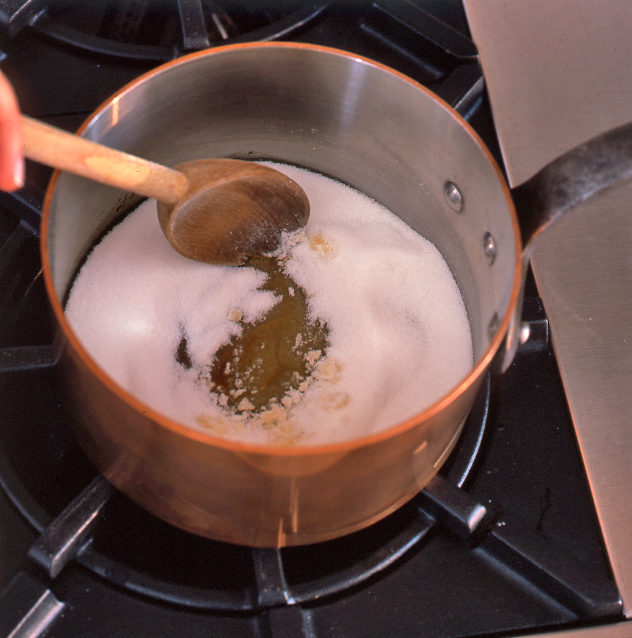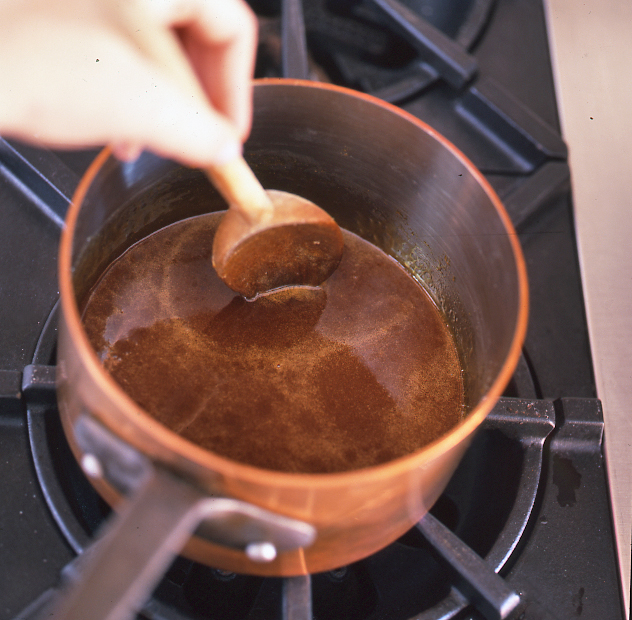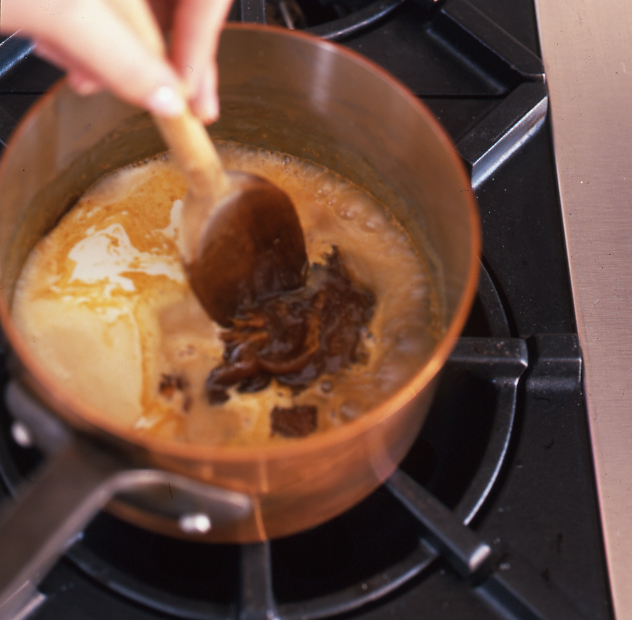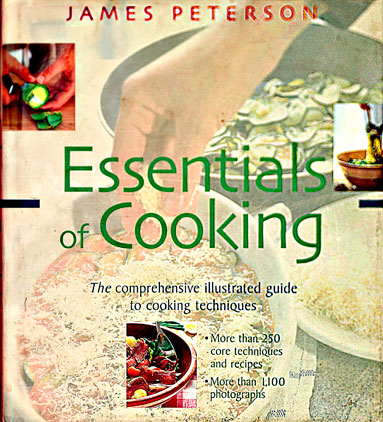Caramel is one of those simple things that throws people off. Perhaps it’s the idea of heating sugar to rather shocking temperature that scares us, but as long as you stand back a bit during critical moments, there is nothing to fear. First off, most recipes include an initial step of adding water to the sugar. This accomplishes nothing and only makes the caramel take longer to cook because before the sugar can begin caramelizing the water must all evaporate off. So when you set out to make caramel, use sugar alone. Traditional recipes suggest cooking caramel in an unlined copper pot, but I do mine in copper lined with stainless steel. Plain stainless steel also works. Don’t use tin-lined copper or aluminum. The important thing is that it be rather heavy so the sugar cooks evenly. Add the sugar, turn the heat to high, and begin stirring with a wooden spoon. After a few moments the sugar will start to lump up, as though you’ve added liquid, but after a couple of minutes, the sugar will begin to liquify. Continue stirring until all the lumps disappear. Now you have a couple of choices, but whatever you do, it’s imperative that you stop the cooking or the sugar will burn. If you’re using the caramel as it is–you’re not converting it into any kind of sauce or syrup–then stop the cooking by plunging the pan in a bowl of cold water. Let it sit in the water for a couple of seconds and then use it immediately before it hardens. Caramel is simply sugar cooked until it turns reddish brown, but there are a number of derivatives. If you add water to the caramel as soon as it’s ready (here you should stand back), you’ll end up with caramel syrup. If you add heavy cream, you’ll end up with caramel sauce. If you cook butter with the caramel and then finish the mixture with cream, you’ll have butterscotch.

1 
2 
3 
4 
5


